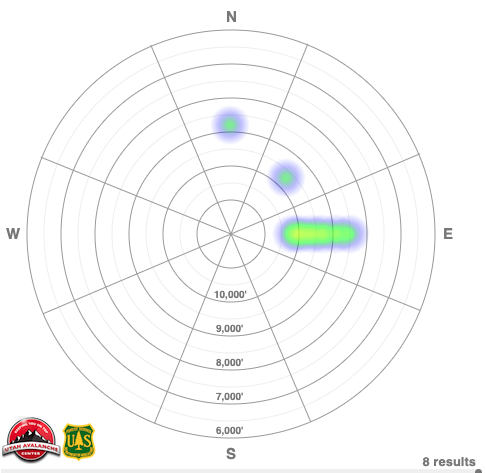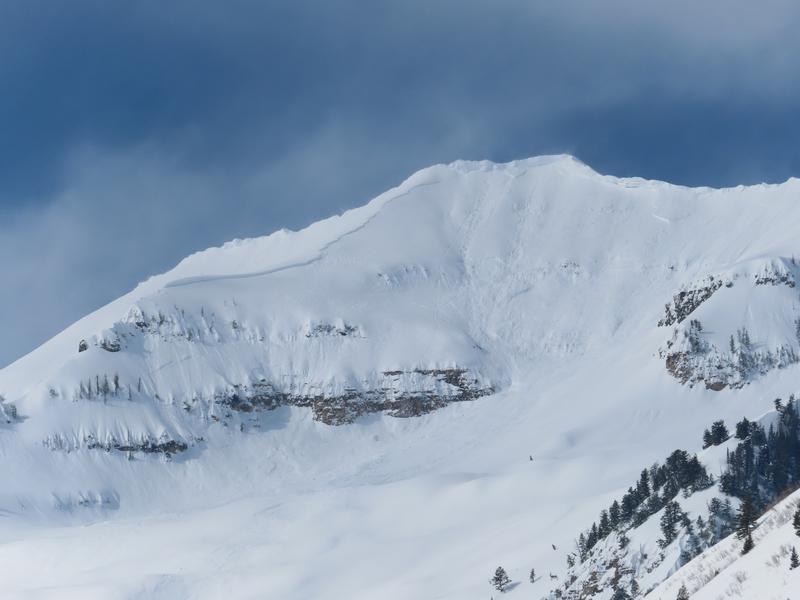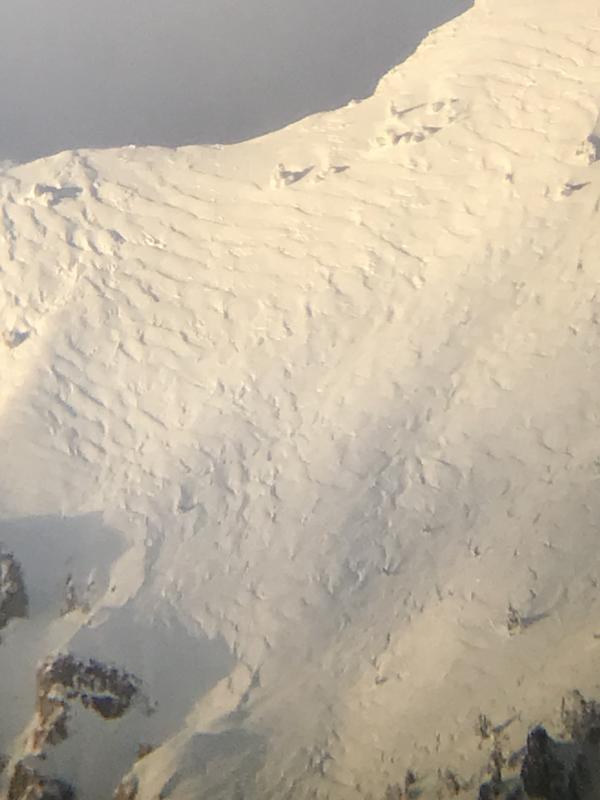This morning under overcast skies trailhead temperatures have dropped from yesterday's high of 40˚F and are in the mid 30's ˚F. 8,000' Ridgetop temperatures are in the low 30's ˚F. Winds are blowing southwest in the teen's MPH at the 7,000' ridgelines and south-southwest in the 20's gusting to the 30's MPH at the 8,000' ridgelines.
For today, skies will be mostly to partly cloudy before a storm begins moving in this evening. Temperatures will be 41-45˚F, and winds will gradually increase from a west-southwest direction 30 gusting to 50 MPH at the 9,000' ridgelines and 35 gusting to 60 MPH at the 11,000' ridgelines. Some mountain locations could see trace-4" of snow throughout the day.
Yesterday, the snow surface at lower elevations out of the wind zone took heat and you may find a light melt-freeze crust around the compass up to 9,000' and on the sunny side of things. There was a brief window when
green-housing occurred midday yesterday. Zimmerman-Wall gives a great description of overall conditions in his
observation from Parley's which would be similar to mid-elevations in the Provo Area Mountains.
The National Weather Service has issued a
Winter Storm Watch from noon today- Tuesday April 4th. They are forecasting 20 to 30" of snow.
This season's continued onslaught of storms has created an all you can eat buffet of avalanche conditions. Over the last few days, we have had reports of
new snow, wind-drifted snow, wet loose, and
glide avalanches. The cornice triggered wind-drifted snow avalanches reported in the Provo Area Mountains from Friday are huge and would have been un-survivable (
HERE and
HERE). You need the right conditions with strong sustained winds and snow available to transport to build slabs of this depth and width. It shows me that high elevation wind-loaded terrain is not something I would mess with right now as an avalanche even half this size would be life altering.
Heat map showing backcountry avalanches that occurred on April 1 and were reported to the UAC from the Salt Lake, Ogden, and Provo area mountains.
Check out all observations
HERE.













